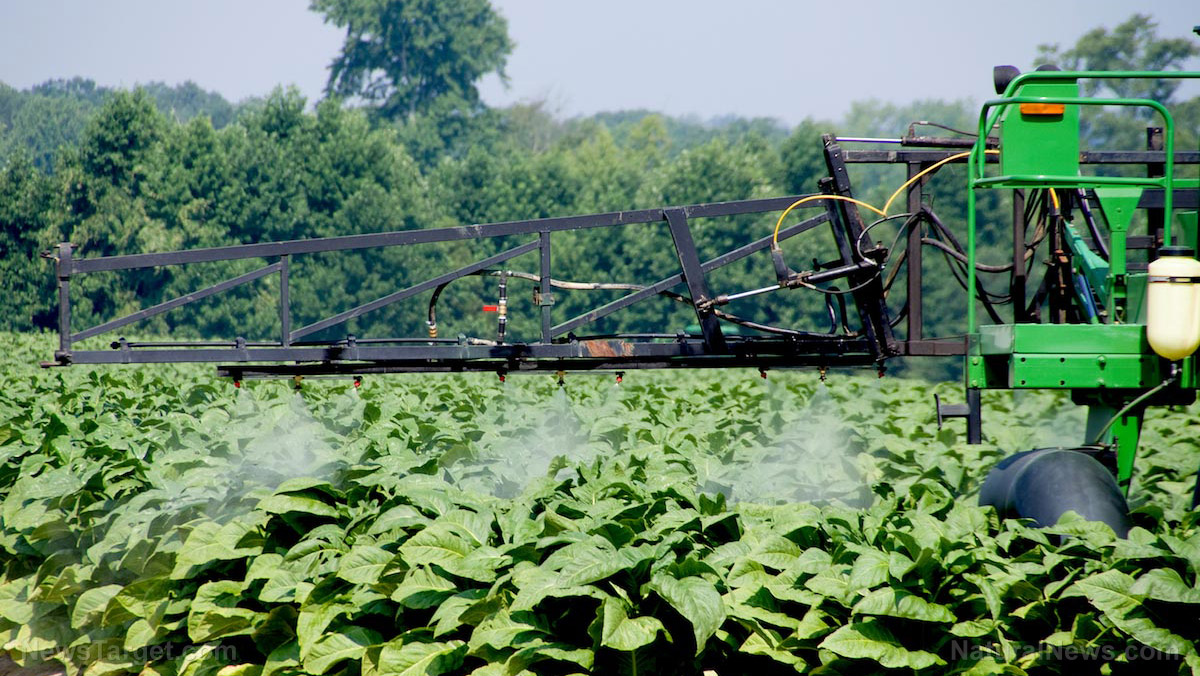Gamma-BHC — toxicity, side effects, diseases and environmental impacts
12/02/2017 / By Zoey Sky

Gamma-BHC, also known as lindane, is a broad-spectrum insecticide. It has been used since 1949 for agricultural and non-agricultural purposes.
Gamma-BHC is banned in various countries. It has been banned by the European Union countries for plant protection while California has banned gamma-BHC-based products used to treat lice and scabies. In Europe, gamma-BHC usage was reduced by two-thirds from 1970 to 1996.
Gamma-BHC is also used against ectoparasites in veterinary and pharmaceutical products. It is also used for the control of disease vectors such as mosquitoes, lice, and fleas. In the agricultural area, it is mainly used to treat seeds and soils. Wood and timber protection are its major non-agricultural use. Gamma-BHC appears as a white, crystalline solid.
Gamma-BHC’s trade names and identifiers include:
- lindane
- beta-HCH
- gamma-HCH
- Hexachlorane
- alpha-HCH
- Kwell
- 1,2,3,4,5,6-Hexachlorocyclohexane
- beta-BHC
- Hexicide
- beta-Lindane
- Benzene hexachloride
- gamma-hexachlorocyclohexane
- Aalindan
- Jacutin
- Gamene
- Gexane
- epsilon-HCH
- 58-89-9
- Agrocide

List of known side effects
Gamma-BHC is toxic if swallowed. Contact with the insecticide can harm the skin and it is harmful if inhaled. Gamma-BHC may cause harm to breast-fed children. Prolonged or repeated exposure to gamma-BHC can cause damage to organs. Gamma-BHC is very toxic to aquatic life, with long-lasting effects.
The fatal dose og gamma-BHC in adults is approximately 10 to 30 grams (g). Doses of 1.6 and 45 g can cause seizures in young children and adults, respectively. Death has been associated with serum lindane concentration of 1.3 micrograms per milliliter (mcg/mL). Serum lindane concentration up to 0.60 mcg/mL can cause seizures, acidosis, muscle weakness, acute renal failure, myoglobinuria, and hypertension in adults.
In children, the ingestion of at least 150 to 450 milligrams (mg) of gamma-BHC can cause symptoms including headaches, dizziness, nausea, lethargy, and seizures. Sub-chronic dermal and oral exposure to gamma-BHC in children has resulted in vomiting and seizures.
Body systems affected by gamma-BHC
Exposure to gamma-BHC may occur from eating contaminated food or by breathing air contaminated during formulation or use. Gamma-BHC is very toxic to humans. The acute (short-term) effects of gamma-BHC through inhalation exposure in humans include irritation of the nose and throat and effects on the blood. Chronic (long-term) exposure to gamma-BHC by inhalation in humans has been associated with effects on the liver, blood, and reproductive, nervous, cardiovascular, and immune systems.
Items that can contain gamma-BHC
Gamma-BHC is used mainly as a seed treatment to control phytophagous and soil-inhabiting insects. Example applications of gamma-BHC include fruit and vegetable crops, forestry, public health applications, tobacco, and timber.
Example manufacturers and suppliers of products using this active include:
- ICI Plant Protection
- Rhone-Poulenc
- Boehringer
- Merck
Products using this active ingredient include:
- Grammexane
- Inexit
- Exagama
- Gallogama
How to avoid gamma-BHC
Always wear the proper protective gear when handling gamma-BHC.
- Eyes/Face – Wear a face shield and safety glasses. Use equipment for eye protection tested and approved under appropriate government standards such as the National Institute for Occupational Safety and Health in the United States or EN 166 (EU).
- Hands – Handle gamma-BHC with gloves.
- Skin – Wear appropriate personal protective clothing to prevent skin contact. The worker should immediately wash his skin when it becomes contaminated. Remove and replace all work clothing that becomes wet or significantly contaminated. Workers whose clothing may have become contaminated should change into uncontaminated clothing before leaving the work area.
- Others – Provide workers with facilities for quickly drenching the body within the immediate work area.
Where to learn more
- 10 Health Benefits Of Eating Organic Food
- 10 Cancer Causers Lurking in Your Home
- 11 Common Cancer-causing Household Items To Remove From Your Home
- Splenda is far from splendid
- Pesticides leave behind legacy of poisoning and contamination
Summary
Gamma-BHC, also known as lindane, is a broad-spectrum insecticide.
Chronic (long-term) exposure to gamma-BHC by inhalation in humans can affect the liver, blood, and nervous, cardiovascular, and immune systems.
Gamma-BHC is used mainly as a seed treatment to control phytophagous and soil-inhabiting insects.
Sources include:
Tagged Under:



















